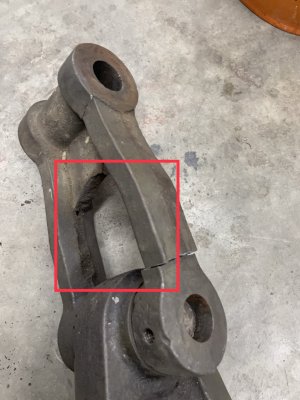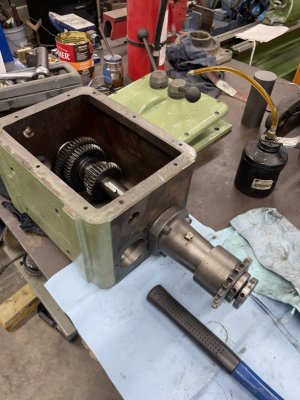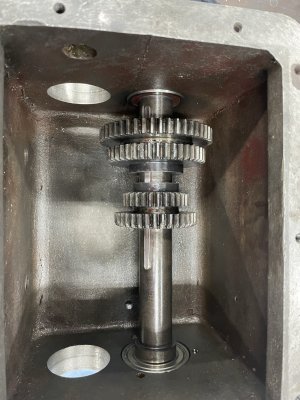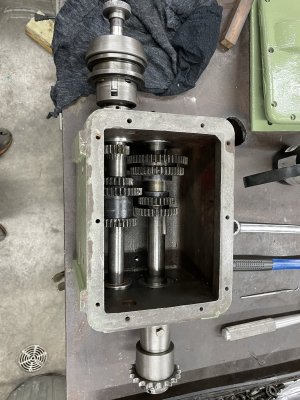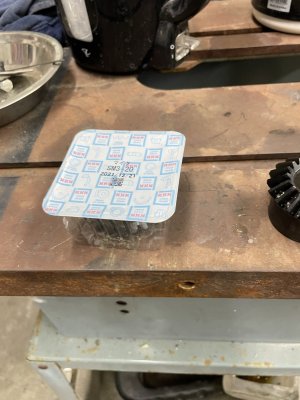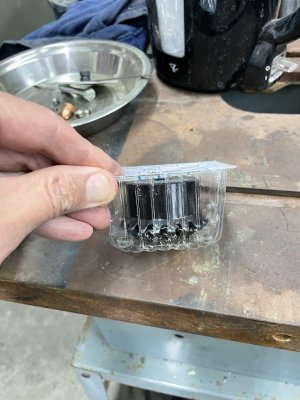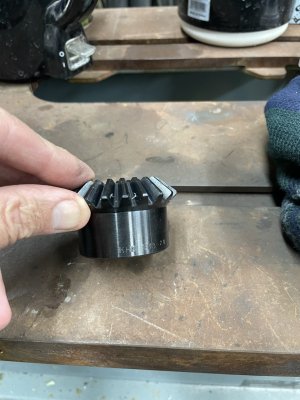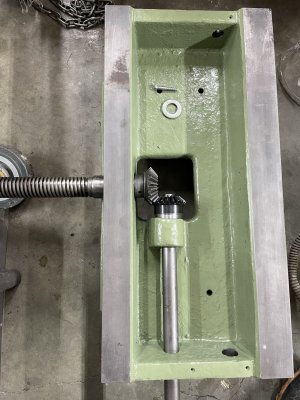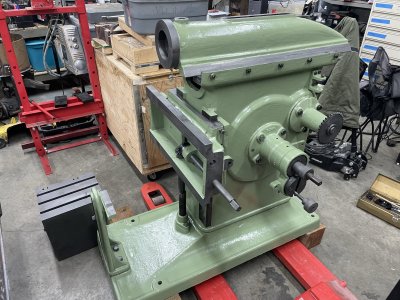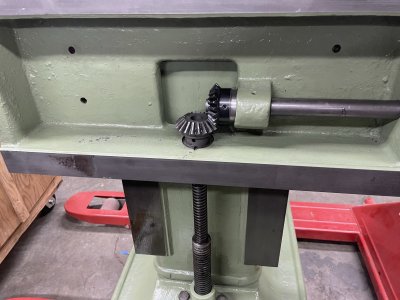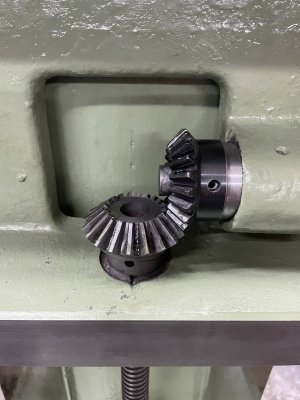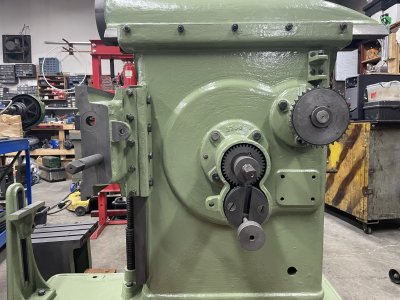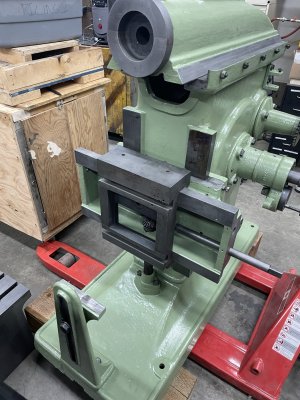deleted_user
Super User
Hey Kevin,
I agree that this looks to have had a previous issue and an initial crack.
I have another approach you may want to try. One I'd want to preserve the part as clean as possible so I'd not want to try brazing or welding as a first option.
Your project has a certain cool factor that will interest people. Your project deserves as good a "rejuvenation" as you can provide it. That means using a cast iron piece rather than aluminum if at all possible.
I've long had a plan that if I ever had a significant restoration where I had a large cast iron member break I'd start contacting every youtuber who works in cast iron and has a decent audience. Then I'd appeal to them to cast the piece for me. I'd offer to pay a small fee and provide content on the restoration for them to use on their channel. Most good tubers always want good channel content related to the theme of their channel.
Simultaneously, I'd work on a back up plan, while taking video and stills of the process.
In that case I'd prepare a pattern for casting the part by doing the following :
clean the broken pieces as much as possible,
insert turned to size stepped wood rod in the machined bores*
cast pieces in epoxy,
epoxy the two "broken" cast pieces back together.
*Required to create the core print. The step at either end is required to decrease the size of the machined bores so that you have machining tolerance when final part is cast. I'd measure the size and location of the bores as accurately as I could, then calculate a an end core size small enough to leave sufficient machining tolerance.
When completed you'd have a model of the part.
At this point I'd determine whether or not I'd want to repair it further to fill in the chunk of web that appears to have previously been broken out of the part.
It is hard to judge the size of the part, but I'd think that there should be extra meat on that part that it could be recast without adding shrinkage factor. Cut the part in half along the separation line and you have your two pattern pieces for cast iron or aluminum casting
If you want to be very precise you can use expanding epoxy formulas to try to scale up the part minutely to composite for shrinkage
BUT my main point is, seek help from a tuber motivated to help because they need good content. I'd watch
I agree that this looks to have had a previous issue and an initial crack.
I have another approach you may want to try. One I'd want to preserve the part as clean as possible so I'd not want to try brazing or welding as a first option.
Your project has a certain cool factor that will interest people. Your project deserves as good a "rejuvenation" as you can provide it. That means using a cast iron piece rather than aluminum if at all possible.
I've long had a plan that if I ever had a significant restoration where I had a large cast iron member break I'd start contacting every youtuber who works in cast iron and has a decent audience. Then I'd appeal to them to cast the piece for me. I'd offer to pay a small fee and provide content on the restoration for them to use on their channel. Most good tubers always want good channel content related to the theme of their channel.
Simultaneously, I'd work on a back up plan, while taking video and stills of the process.
In that case I'd prepare a pattern for casting the part by doing the following :
clean the broken pieces as much as possible,
insert turned to size stepped wood rod in the machined bores*
cast pieces in epoxy,
epoxy the two "broken" cast pieces back together.
*Required to create the core print. The step at either end is required to decrease the size of the machined bores so that you have machining tolerance when final part is cast. I'd measure the size and location of the bores as accurately as I could, then calculate a an end core size small enough to leave sufficient machining tolerance.
When completed you'd have a model of the part.
At this point I'd determine whether or not I'd want to repair it further to fill in the chunk of web that appears to have previously been broken out of the part.
It is hard to judge the size of the part, but I'd think that there should be extra meat on that part that it could be recast without adding shrinkage factor. Cut the part in half along the separation line and you have your two pattern pieces for cast iron or aluminum casting
If you want to be very precise you can use expanding epoxy formulas to try to scale up the part minutely to composite for shrinkage
BUT my main point is, seek help from a tuber motivated to help because they need good content. I'd watch

